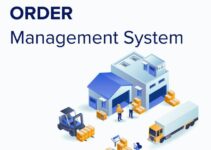Flipkart is a leading Indian e-commerce platform and online marketplace. Binny Bansal and Sachin Bansal founded the company in 2007. Today, we’ll discuss the value chain analysis of Flipkart supply chain analysis; primary and supporting activities in the process of value chain analysis Example Company. They are inbound and outbound logistics, operations, marketing, and customer service; infrastructure, HRM, technology, and procurement as an application of the value chain analysis process.
Premium and Top Sellers on Flipkart
- Home and kitchen brands – Tupperware, Bombay Dyeing, Wonderchef, Phillips, Prestige
- Fashion brands – Wrangler, Biba, Allen Solly, Myntra
- Mobile phones – Apple, Samsung, RealMe, Xiaomi
- Private labels – Billion, MarQ, SmartBuy
- Retailers – Vijay Sale, Croma, Reliance Digital
The Value chain analysis of Flipkart supply chain analysis would analyze the primary and supporting activities in the process of value chain analysis. They’re inbound and outbound logistics, operations, marketing, and services; infrastructure, HRM, technology, and procurement. Here’s supply chain analysis of Flipkart value chain analysis company example as follows;
Value Chain Analysis of Flipkart
Let’s discuss the primary and supporting activities involved in the process of value chain analysis of Flipkart supply chain analysis. It is an application of value chain analysis based on Porter’s model; some of the key elements and components of value chain analysis are as follows;
Primary Activities of Flipkart
Some of the five main primary activities in the value chain analysis of Flipkart supply chain analysis are as follows;
Inbound Logistics of Flipkart
I-Sellers as Suppliers
Flipkart has established a very large network of sellers on its platform comprising 1.4 million sellers and they serve as the suppliers of the company. The sellers offer a wide range of products and goods in multiple categories to the over 500 million customers market. However, some of the sellers are the leading brands and they have established their seller store on Flipkart; they’re as follows;
- Pigeon
- Dream living
- Borosil
- Gala
- Nivia
- Lyra
- Jockey
- SparX
- Rupa
- TH
- Dove
- Coca-Cola
- Aashirvaad
- Maggi
- Surf Excel
II-Seller Programs
The seller program of Flipkart is very successful and it has attracted the attention of a lot of customers and potential suppliers or sellers. Some of the main benefits they receive by collaborating and partnering with Flipkart are as follows;
- Access to the 500 million customer market
- Amplify their business growth 5 times more
- Sellers could easily set up their accounts within a few minutes
- Training programs, business insight, and other support to the sellers
Outbound Logistics of Flipkart
I-EKART Shipping
EKART is the shipping unit of Flipkart and it helps the company in fulfilling the shipment and delivering the products to the customers. For logistics and transport, it employs both Air and Road mediums of shipment for delivering goods to the customers. However, the company also outsources the sub-vendors and 3rd party logistics service providers; they help the company deliver the products to the customers.
Operations of Flipkart
I-Warehouses & Distribution Centers
Flipkart has established a network of over 80 warehouses and distribution centers and they temporarily store and organize products in different categories before delivering them to the customers. The company has the following types of warehouses and they’re as follows;
- Cross-docking centers – their role is to transfer goods from one medium of transportation to another
- Sortation centers – they have the obligation of organizing and dispatching products and goods to the fulfillment centers
- Fulfillment centers – specialized warehouses that store and deliver goods to the end customers
II-Warehouses Objective
The warehouses of Flipkart play a key role in delivering the customers’ ordered products and goods to their doorstep. The company has built it in strategic locations across India to decrease the delivery time. It allows the company to approach the mass audience in a short time and decrease the shipping cost; improve the overall customer satisfaction level.
Marketing & Sales of Flipkart
I-Creative Marketing Campaigns
Flipkart runs creative marketing and advertising campaigns for its products and goods on various media channels. It helps the company to attract the attention of customers and gives significant brand exposure. Some of them are as follows;
- Showing the frequently bought together items as complimentary
- Superhero flip girl for making the fast delivery of products and goods
- Highlight the multi-purpose of its products
- Celebrating special days and occasions to connect with the people
Services of Flipkart
I-After Sale Services
Flipkart offers a wide range of after-sales services to the customers in order to improve the customer satisfaction level and increase brand loyalty. Some of them are as follows;
- Returning the products
- Refund
- Allowing customers to manage their orders
- Contacting the sellers
- Connecting with other issues and problems
Supporting Activities of Flipkart
Some of the main supporting activities in the value chain analysis of Flipkart supply chain analysis are as follows;
Infrastructure of Flipkart
Flipkart has established a very large infrastructure of warehouses, fulfillment centers, customer databases, suppliers and sellers network, delivery channels, and online platforms. Well-organized mega infrastructure helps the company to satisfy the needs and wishes of customers by timely and efficiently delivering products and goods to the customers.
HRM of Flipkart
Flipkart has employed over 22000 employees to manage its retail e-commerce operations; excluding employees from its suppliers. The human resource management department of the company plays a key in building and maintaining a healthy workplace environment; and makes sure that the company smoothly performs its operations to satisfy the needs and requirements of customers.
Technological Development of Flipkart
Flipkart invests a significant amount of capital resources in research and technological development; because the company is operating its business in the tech industry. It is necessary for the company to keep updating its platform, including new features and services, and simply the user experience to keep up with the customer market trends. Otherwise, the customers would switch to another e-commerce platform.
Procurement of Flipkart
Flipkart is highly cautious about procurement and the suppliers’ procuring practices. The company makes sure that they’re complying with the ethical and sustainable practices; following the human rights standards and regulations while sourcing and producing the products and goods. In fact, the company has made a strong commitment towards zero-carbon emissions in the upcoming years.
Conclusion: Flipkart Value Chain Analysis Example Company | Application of Value Chain Analysis Process
After an in-depth study of the value chain analysis of Flipkart; we have realized that Flipkart is the world’s leading Indian e-commerce platform and online marketplace. If you are learning about the Flipkart value chain analysis example company; then you should keep in mind the abovementioned primary and supporting activities. They’re inbound and outbound logistics; operations, marketing and sales, and services; infrastructure, procurement, HRM, and technological development as an application of the value chain analysis process.
Ahsan is an accomplished researcher and has a deep insight in worldly life affairs. He goes Live 3 days a week on various social media platforms. Other than research writing, he’s a very interesting person.


